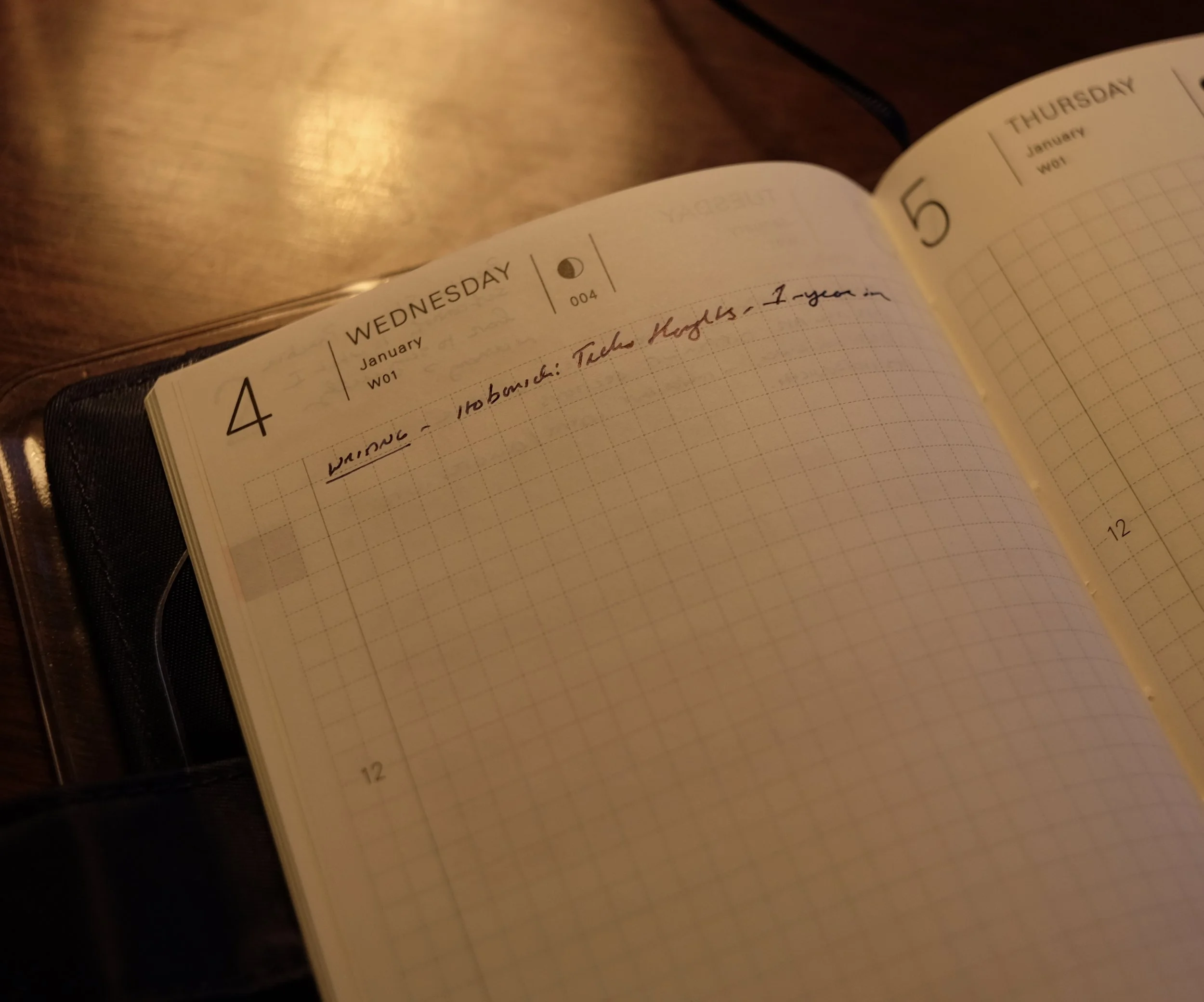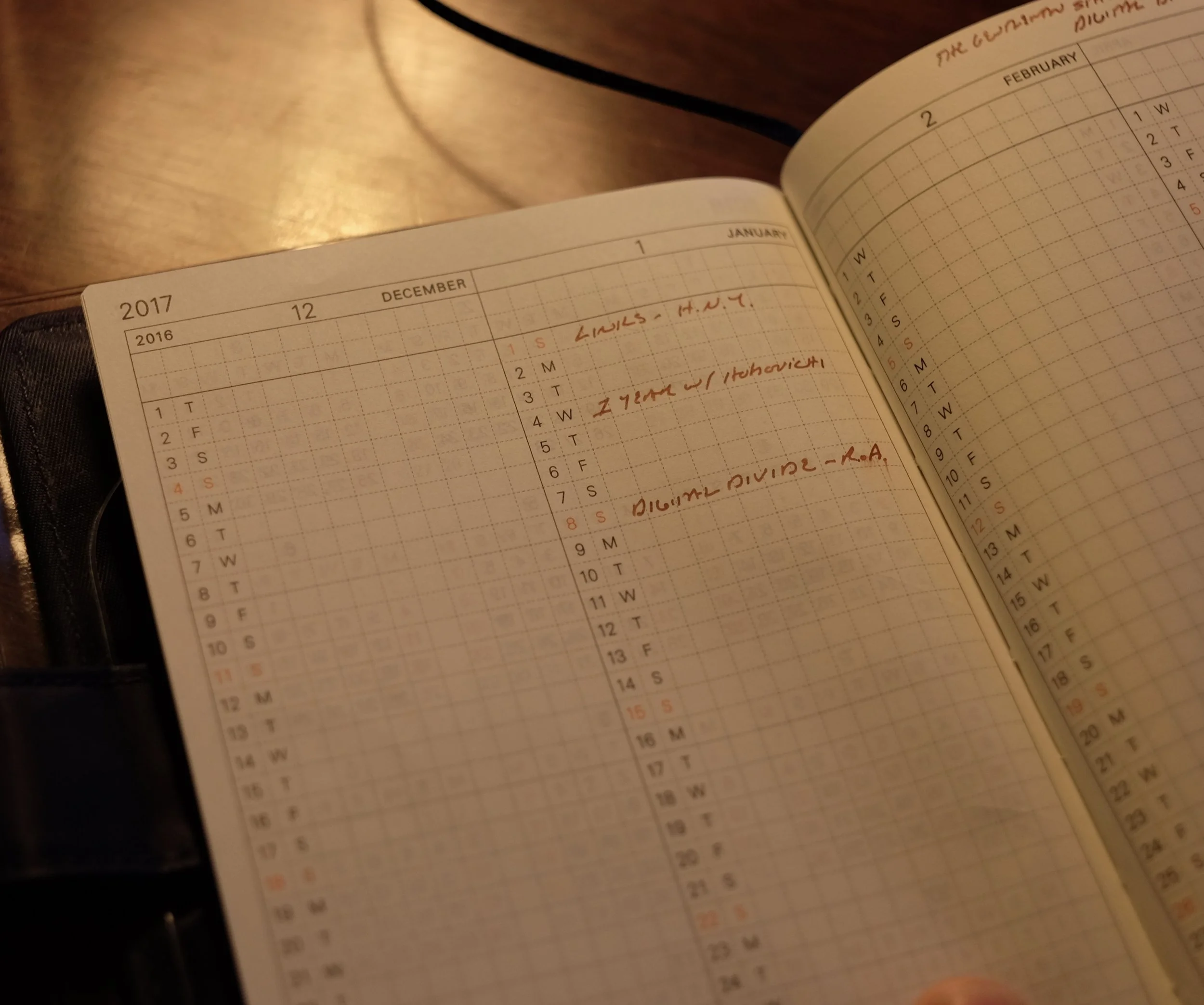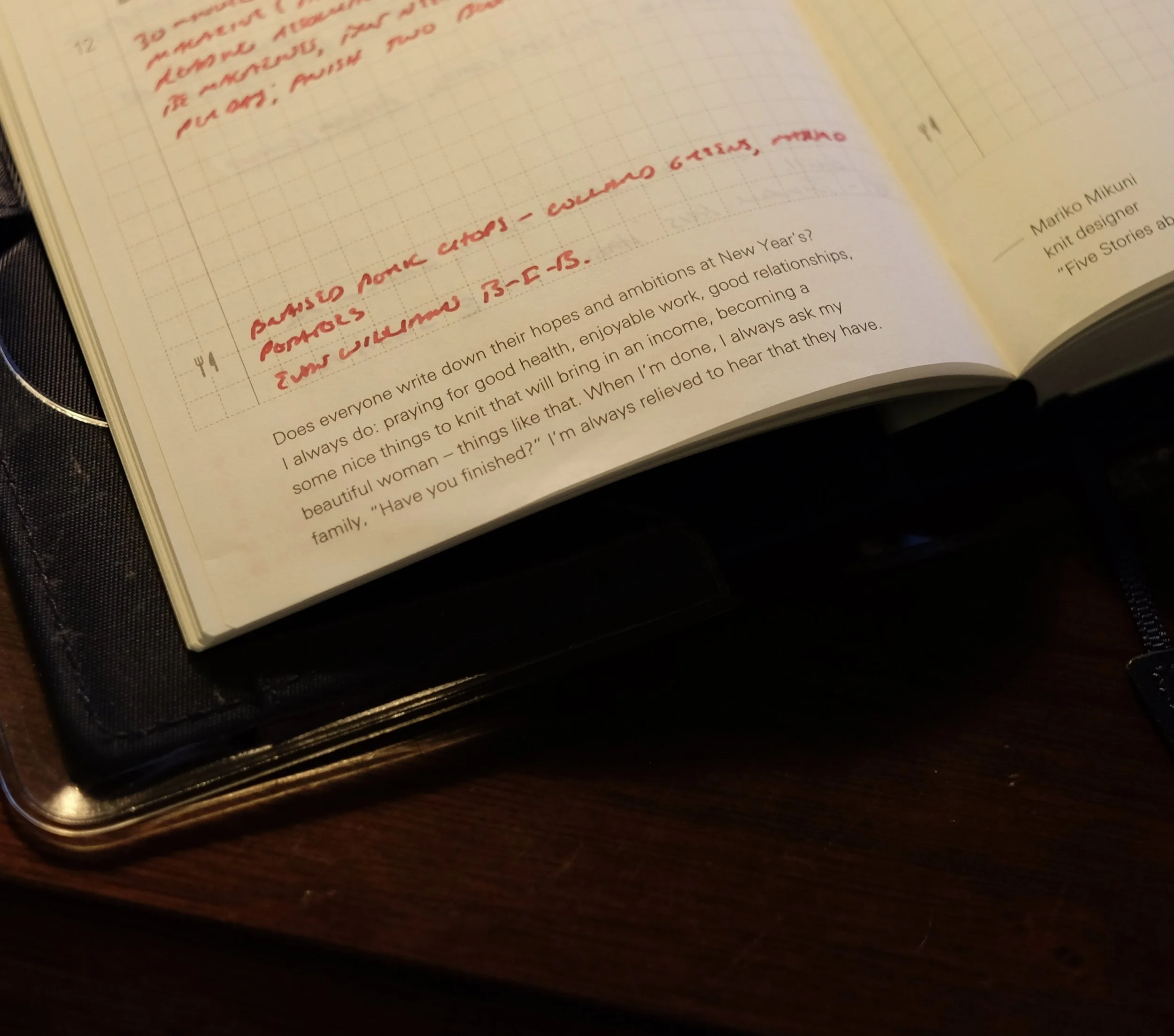Back in May, I offered my initial thoughts after spending five months with the Hobonichi Planner. For those of you unfamiliar with the Hobonichi, a quick recap; it's a bound notebook with dated pages that's sold and marketed as a planner, and many people use it for that purpose. Unlike most "planners," however, the Hobonichi uses the amazing fountain-pen friendly Tomoe River paper, and its pages aren't set up in such a way that precludes you from using the book as something other than a planner, such as a journal, commonplace book, life log, etc.
When I ordered my first Hobonichi in December 2015, I intended to use it as a journal, and for the most part that's what I've done, using it to jot down quotes, thoughts, accomplishments, significant events in my life - you get the idea. Using the Hobonichi's "single-page-per-day" format for journaling is a lot less intimidating than starting a journal in a blank book. It doesn't look "out of place" to fill up only a quarter of a page, and there were many uneventful days where I couldn't muster more than a few lines. I even allowed myself to miss some days entirely, though it didn't happen very often. When I did miss a day or left a page mostly blank, sometimes I'd come back and use the empty space (on that awesome paper) to jot down thoughts on a potential blog post, test an ink, etc.
So What's New?
Honestly, my first year with the Hobonichi was an experiment, and now that I know I that I like the Hobonichi format and have a use for this product, I've spent some more time thinking about how I'd like to use the book differently to maximize both my enjoyment and the utility. A few ideas that I plan to try out:
- A planner for certain things. I'm going to continue to use the Hobonichi as a journal (or as much of a "journal" as I keep), but I also want to try to use it as more of a planner for certain specific things, such as the blog/website. (I tried this for a bit last year and liked it, but fell off the wagon about halfway through.) Another great feature of the Hobonichi is that it's basically three planners in one. The day-per-page section makes up the bulk of the pages, but the front of the book also contains a traditional month-on-two-pages section and a column-style layout with four months on two pages. The latter looks like it would be perfect for a blog editorial calendar. (See pictures of the various layouts below.)
- More specificity. I also want to be a bit more active in writing things down. I spent some time over the holidays reading back through last year's entries, and was pleasantly surprised at how much fun it was to recall small details that I had completely forgotten about: the name of a restaurant where we had dinner on vacation, something hysterically funny my daughter said, little things, seemingly insignificant at the time, that would otherwise be lost if I hadn't taken 30 seconds to jot them down.
- Lists. I like making comprehensive lists but I'm really bad at maintaining them over the long-term. It's been a goal of mine for a while to keep good running lists of books I've read and want to read, music I want to listen to, pens I've tried, various "wish lists," etc. The problem is that I start them in several different places and don't update them. At least some of these are going into the Hobonichi, which has 12 blank dot-grid pages at the back.
The common thread running through all of these "goals" is that most of them require that I carry the Hobonichi with me, if not all the time, certainly more than last year when it lived on my desk at home. Good thing it's extremely portable! I also invested in a canvas and plastic cover, so there's less concern about this small journal getting smashed up in a bag.
Where to Buy the Hobonichi Planner
If you're interested in getting the Hobonichi Planner into your hands as quickly as possible, Amazon is your best bet due to the Prime shipping eligibility. The official Hobonichi Covers are a bit hard to come by, so you may have to order them directly from Japan, but you can find third-party versions on Amazon, including some from Galen Leather (whose products I've reviewed before). Jetpens also stocks both the Hobonichi and the cover but they are currently out of stock.
At some point I'd like to try Hobonichi products other than the A6 planner. There is a larger A5 size Hobonichi "Cousin," as well as a smaller "Hobonichi Weeks" version that is slim enough to slip into a jacket pocket. If you like the A6 size and layout but want a slimmer book, the original Techo is also sold in two volumes, called the "Hobonichi Avec."
A final note: The naming conventions of the various Hobonichi products can be somewhat confusing at first. The "Hobonichi Planner," which is what I own and what is pictured above, is the English-language version of the "Hobonichi Techo," the original A6 planner from Japan. To my knowledge, the Hobonichi Planner is the only English-language Hobonichi - all others are in Japanese - but that doesn't stop many non-Japanese speakers from using the Japanese versions. YMMV depending on how you want to use the book, so be warned before you order anything other than the English-language planner.
Disclaimer: I purchased the product featured in this review with my own funds, for my own use. This post contains affiliate links.



